Singapore Math = Arithmetic Education
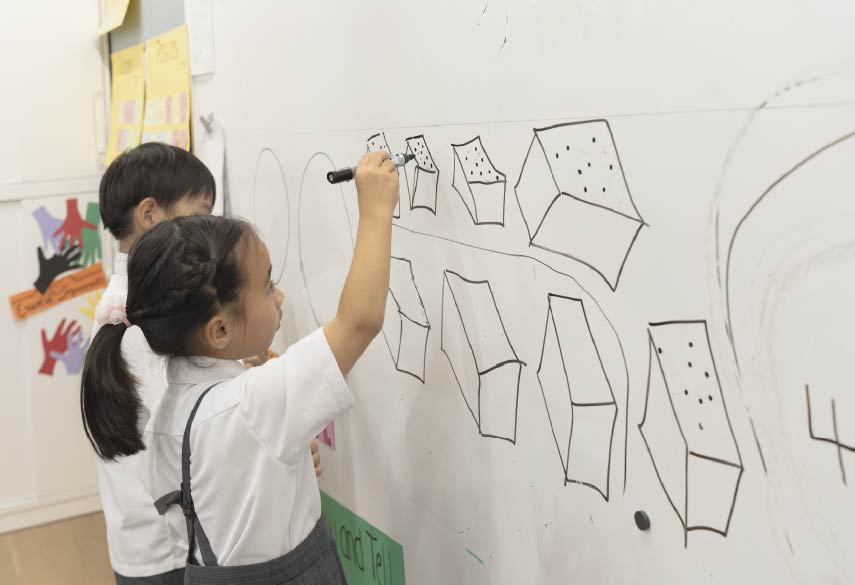
5 Features of Singapore Math
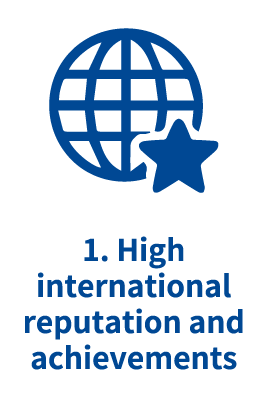
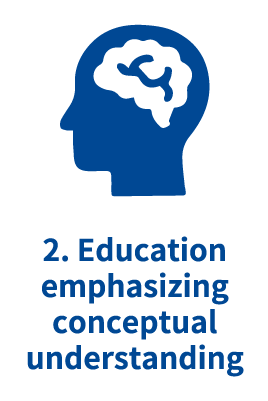
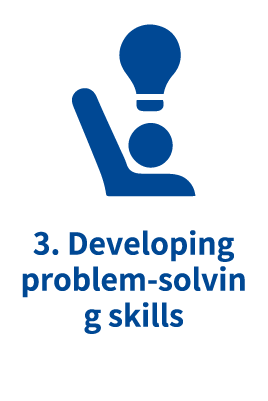
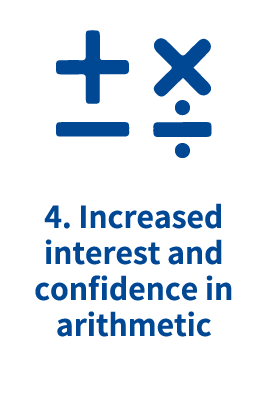
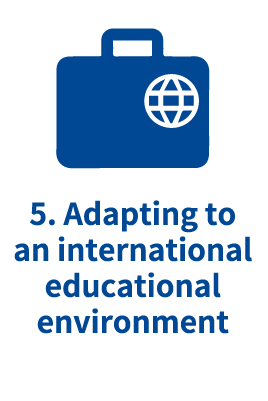
Singapore Math is a Singaporean math education method that has been highly rated in international academic surveys.
The emphasis is on developing conceptual understanding and problem-solving skills, rather than memorizing calculation methods.
Using methods such as the CPA approach and the Bar Model, students will develop their understanding step by step from concrete to abstract symbols, and develop their application and logical thinking skills.
It also increases children’s interest and confidence in arithmetic by providing them with a convincing sense of “why this is so” It helps them adapt to an international educational environment in the future.
These features have been introduced with the goal of maximizing children’s arithmetic skills and building a solid foundation.
CPA approach (concrete -> pictorial -> abstract)
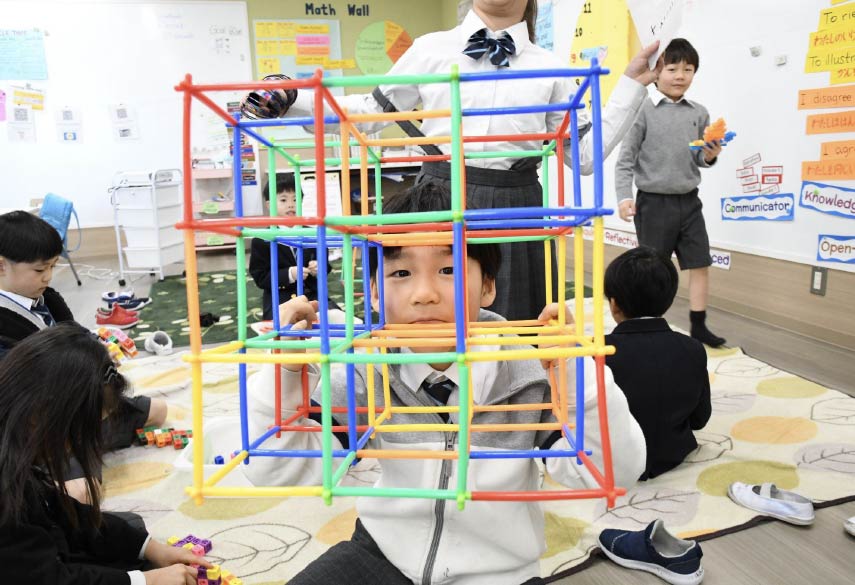
Students learn about the characteristics, volume, and surface area of three-dimensional objects using cones, spheres, and cubes, and learn basic arithmetic, such as addition and subtraction, by adding and removing objects using concrete materials.
Visual learning using “Bar Model”
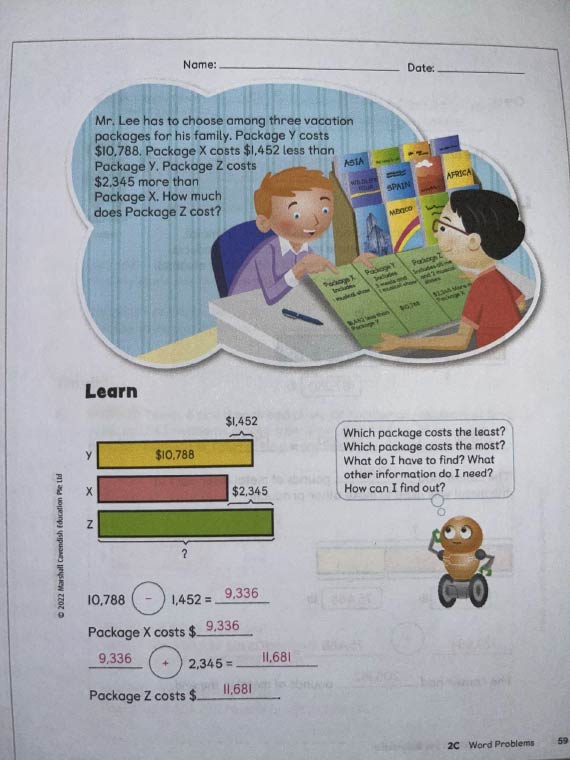
It is a powerful tool for visually representing math word problems and aiding in understanding and solving them.
Rectangular “bars” are used to illustrate the quantities and relationships in the problem.
Example
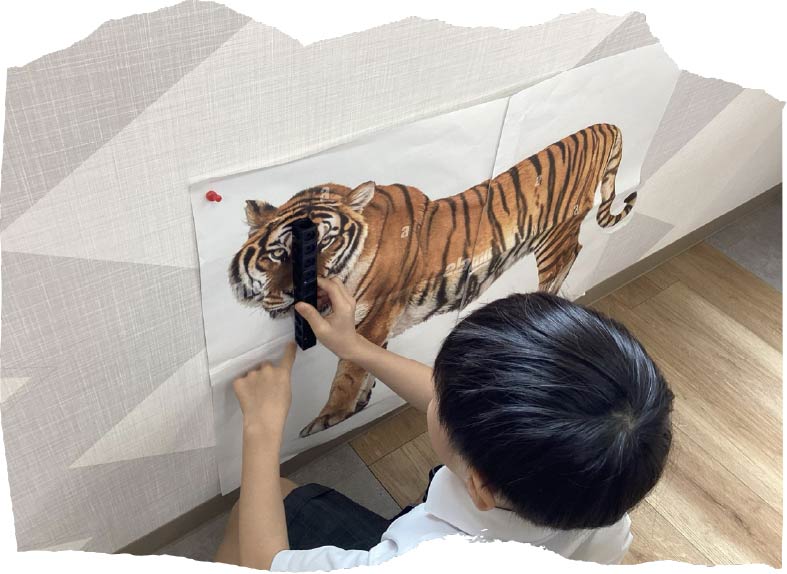
Measuring is a major contributor to the development of science.
In this unit, G1 students measured various shapes using objects found in the classroom.
At first, they measured the shapes of objects they liked, such as toy cars. However after much discussion, they decided to measure using a cube, as it was easier to measure many shapes in a short time if they all measured with a common object.
This is a huge learning experience for the students.
Because they have learned that
there is a process of reaching agreement before a unit of measurement is used.
That is why it is possible to measure accurately.
In the BDP required course “Theory of Knowledge,” a question was asked in 2022 about the extent to which we agree with Galileo Galilei’s assertion to “measure what can be measured and make what cannot be measured measurable.“
